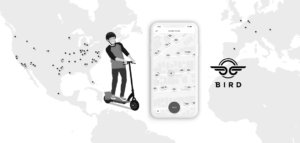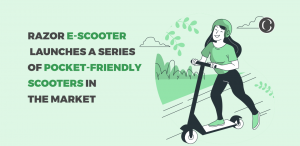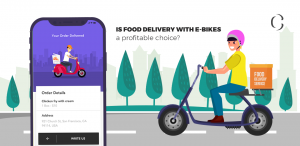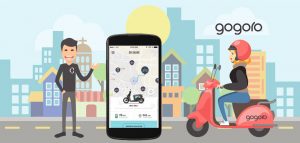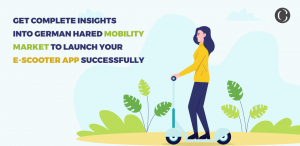The Future of (E Scooter) Micro-Mobility in 2020 – Rohak E-Scooter Sharing Business Platform

The multi-modal shared micro-mobility has seen an exciting rise in the lives of urban dwellers. The micro-mobility has been integrated into the cities and daily lives of most people. However, as these micro-mobility systems become properly blended and trusted, cities now anticipate more data from e-scooter rental companies and service providers.
The micro-mobility operations have begun to grow in size and scope. This is evident through the increase in e-scooter rental companies and partnerships happening within the industry. Electric vehicles are the future and they will be offering new and innovative solutions to the- mobility problems we face today throughout the rest of 2019 and into 2020.
AI-powered E-scooters – next in line for micro-mobility
There is no debating in the prevalence of micro-mobility over the past few years. However, we still suffer some major problems with this mode of transport. For example, dockless e-scooter sharing. They are facing the most crucial issue of the scooters being left at inappropriate places on city streets and curbs. Charging the scooters is also a challenge that each scooter rental company faces.
To overcome these challenges the e-scooters companies like Segway-Ninebot Group have recently unveiled a scooter that can return itself to charging stations without a driver. This seems a potential autonomous solution for the current e-scooter problems in the future days to come. Uber and Lyft will be using the new semi-autonomous vehicles that are expected to hit roads early next year. These AI-driven scooters can be controlled remotely and could boost the economics of scooter-sharing.
What do the top VC’s feel about the future of (E Scooter) micro-mobility?
Micro mobility basically includes two main types of vehicles – E-scooters and E-bikes. The key passengers have already joined the game and the process of checking out customer choices.
In the mobility sessions held by TechCrunch the leading mobility-focused auto companies, startups, executives and thought leaders discussed the things related to micro-mobility and electric vehicles. The panelists went over the mobility investment and how it has changed over the years. They compared the business models of scooters, e-bikes, e-motorcycles, rideshare while discussing Uber and Lyft’s role in the mobility ecosystem.
Michael Granoff said mobility was defined as the personally owned and run by an individual operated internal combustion engine car. But later in 2018, there came a time when third-party apps like Waze, Uber, Lime, and Bird began the age of digital mobility and changed the definition of mobility itself.
Ted Serbinski added that he thought mobility is the transfer of people and goods. The micro-mobility has caused the intersection of the physical and digital worlds. It is this intersection that enables new ways to move around.
Micro-mobility in 2020
The micro-mobility has the potential to better connect people with public transit and reduce their reliance on private cars. They are making most of the existing space with their right-size at the same time reducing greenhouse gas emissions. But like every new entrant, the micro-mobility also faced backlash from the city governance. But now, governments in various cities are eager to find a productive way forward and integrate micro-mobility more and more in the future.
Micro-mobility services will offer a tantalizing solution to approach the first-mile/last-mile quandary and to shorten transportation deserts. Mobike which is a dockless bike-sharing system in China insists to have nearly doubled convenience to jobs, education, and health care by targeting distances more than 500 meters from public transport in Beijing and arranging their fleet to fill those gaps.
Half of the shared bike trips in Chinese cities are a part of a multimodal journey that includes public transit. Micro-mobility is a powerful tool to fight access to transport for traditionally underserved communities. The use of e-scooters has been the highest among lower-income users according to a survey.
Micro-mobility potential extends much beyond just connecting people to mass transit. In Portland, Oregon’s e-scooter pilot, sufficiently 34 percent of participating citizens said they would have bought a car or used a ride-hailing service or taxi had scooters been unavailable. The percentage was even higher among visitors to the city.
Micro-mobility investor and preacher Oliver Bruce thinks that more than 1.4 trillion miles of annual US commuter trip—and more than 4 trillion miles globally—could be converted to micro-mobility modes. It is an addressable market possibly worth hundreds of billions of dollars.
Mapping micro-mobility
The potential for micro-mobility to replace for car-based transport is not evenly scattered inside each metro area. Earlier Deloitte’s study of bike commuting implies that the biggest potential advantages are likely to be in focus urban centers and, possibly in suburban neighborhoods near smaller commercial centers.
Micro-mobility offers an enormous opportunity for cities and service providers, possibly serving to direct some of the most vexing transport difficulties facing urban areas: overcrowding, discharges.
Looking at this scenario, we can come to the conclusion that micro-mobility has a huge potential for your business venture 2020. All you need now is an app to make your business reach the residents of the city. Our micro-mobility platform Rohak can be your best choice. It has the latest IoT technology to connect your e-scooters and engage your customers to make them keep coming back to you. It is a fully functional customizable white label solution that can be made available to you in just 45 days.
If you want to know more about Rohak, you can visit our e-scooter app development page or connect with us for a free consultation session.



